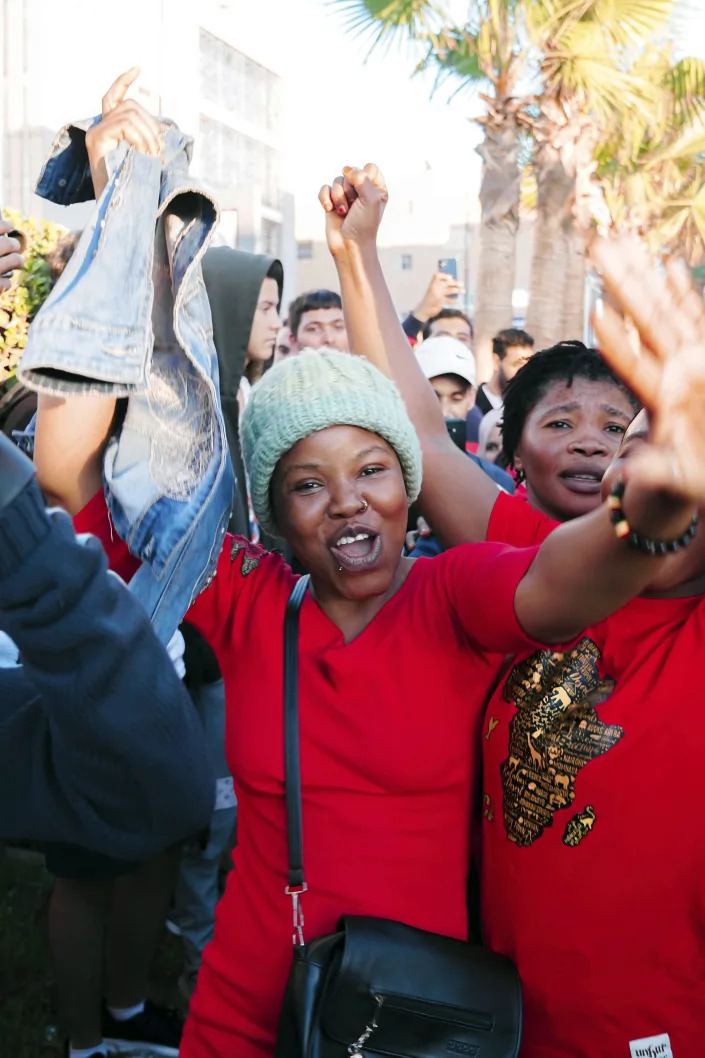New penalties for companies that illegally fire workers who unionize
Federal labor officials released new rules that could penalize companies that break laws when firing employees engaged in lawful union activity. (AP)
Lauren Kaori Gurley, (c) 2022, The Washington Post
Tue, December 13, 2022
Companies that illegally fire or demote unionizing workers can now be held responsible for workers' financial harms - including credit card late fees, lost housing or cars and health care costs - in a move that could help some workers who have been fired from Starbucks and Amazon, labor activists say.
In a big win for labor unions, the National Labor Relations Board ruled on Tuesday to expand the fees and penalties the agency can collect from employers that illegally terminate workers for labor activism, both union and nonunion, in a move long sought after by the labor movement.
"Employees are not made whole until they are fully compensated for financial harms that they suffered as a result of unlawful conduct," said labor board chair Lauren McFerran in a statement.
For decades, employers that fired workers for their involvement in labor organizing - a legally protected activity - have only had to pay for the employee's reinstatement and lost wages. But labor advocates say that has amounted to little more than a slap on the wrist, especially for major employers with deep pockets such as Amazon and Starbucks.
"Fear of retaliation and dismissal is the primary obstacle stopping workers from getting involved in union organizing campaigns," said John Logan, a professor of labor studies at San Francisco State University. "Increasing the currently meaningless penalties for terminating workers is the most obvious thing to fix that."
Under the new ruling, the labor board can also hold companies, as well as unions, liable for damages, such as a wronged worker's health care and child care costs, immigration paperwork and visas, lost investment income and legal fees for defending against unpaid bills.
To obtain relief for workers, the agency's top prosecutor will be required to provide evidence that the company's actions provoked the financial harm and that it was direct or foreseeable. Companies will then have the opportunity to disprove that evidence.
The agency can also collect these penalty payments when employers illegally demote employees, cut their wages, or otherwise retaliate.
The ruling arrives under the recommendation of the labor board's top legal counsel, Jennifer Abruzzo, a Biden appointee, who has expanded the agency's tool kit in some unprecedented ways and could be the president's best shot at being the most pro-labor president in U.S. history.
Some law firms that represent management have been critical of Abruzzo's approach, describing her proposals, including increased penalties on employers, as "hawkish" and anti-employer.
This year has seen a surge of first time union victories at companies, such as Amazon, Trader Joe's, Chipotle, and Apple that have long evaded unionization, as well as a 53 percent uptick in filings for union elections nationwide. But union organizers say these efforts have been met with widespread retaliation from employers.
Starbucks Workers United, which has unionized 270 stores over the past year, says the coffee giant has fired more than 150 union activists. Earlier this year, Starbucks fired seven unionizing baristas at a store in Memphis after they spoke to a local TV station, a set of terminations later found to be illegal by a federal judge.
Starbucks has said that it informs and trains managers that employees should not be fired for engaging in legal union activity, and that the Memphis workers committed policy violations related to store safety and security procedures that apply to all workers.
For years, labor-friendly lawmakers have tried to broaden penalties for employers that violate labor law, including a draft provision in Biden's Build Back Better Act that would have imposed a $50,000 fine on employers that illegally fired labor activists. But all of those efforts failed.

















